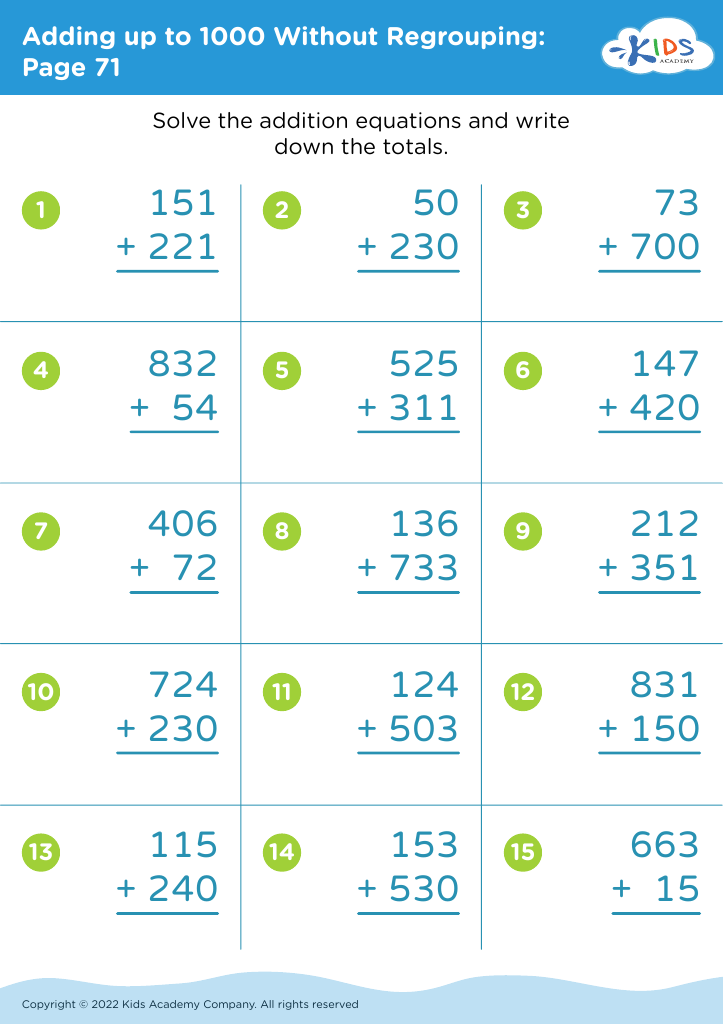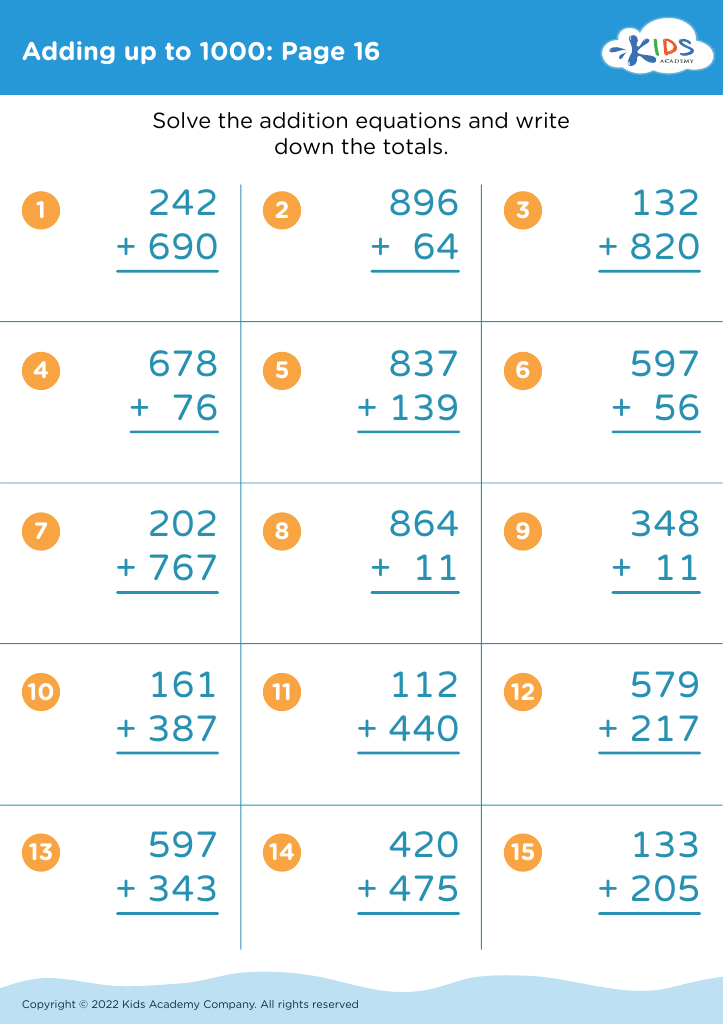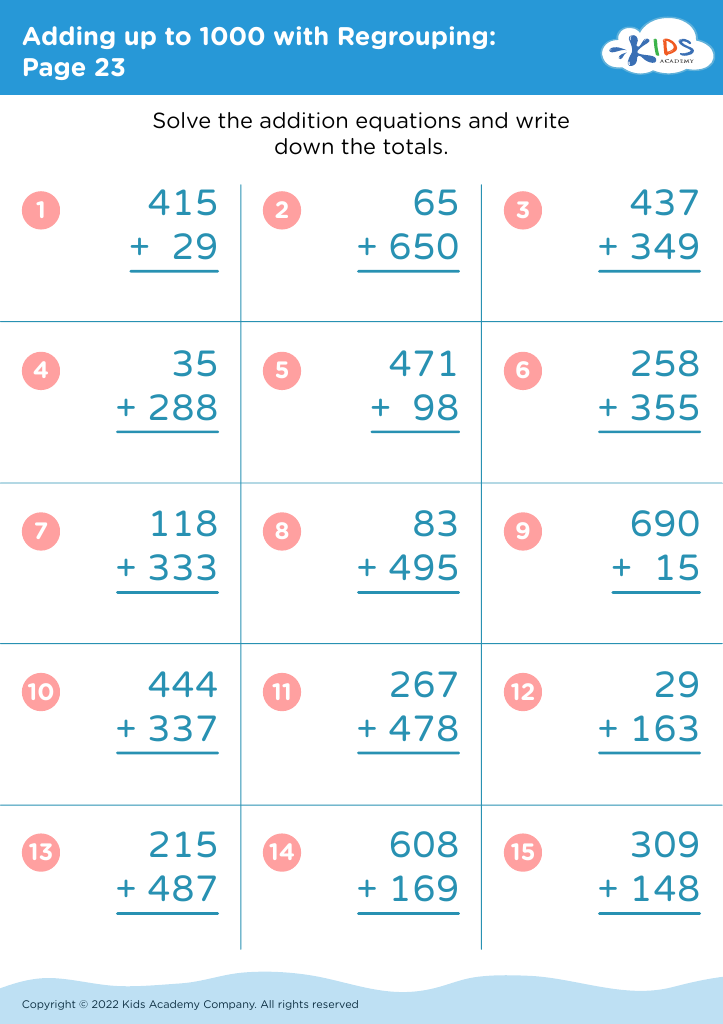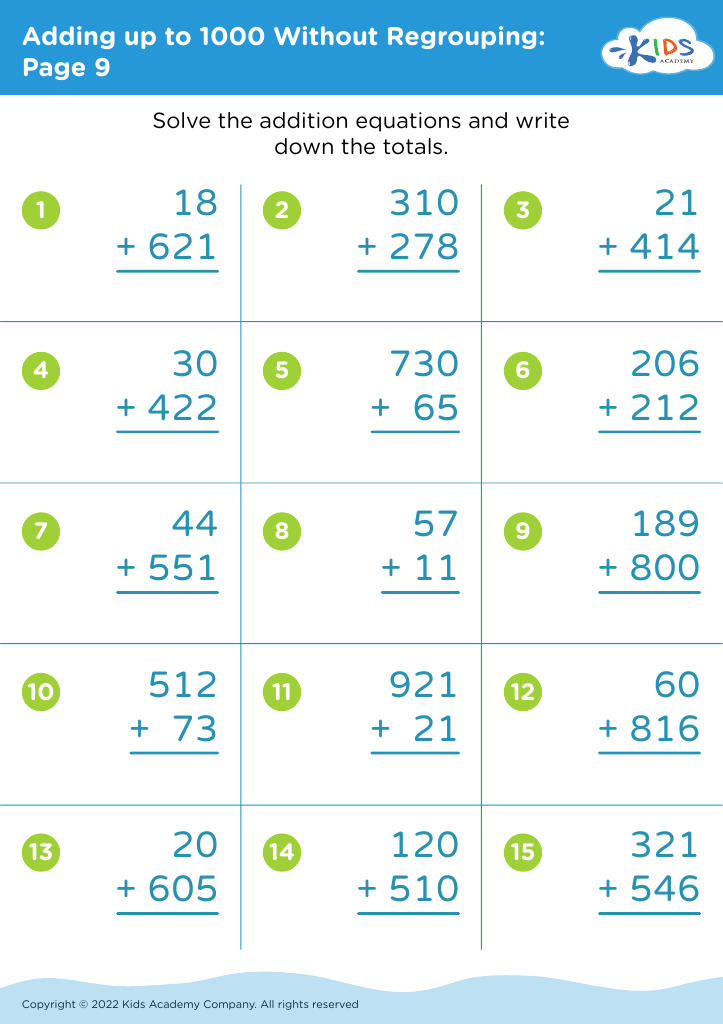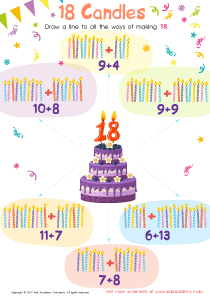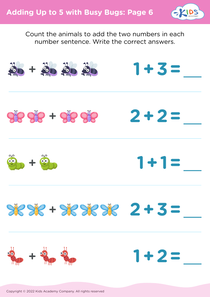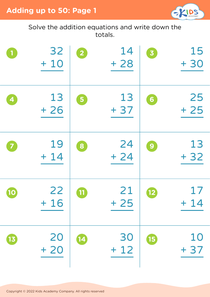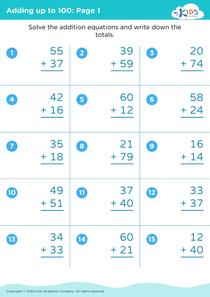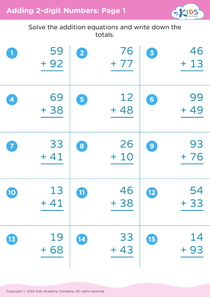Recognize patterns Adding up to 1000 Worksheets for Ages 4-8
6 filtered results
-
From - To
Explore our engaging "Recognize Patterns Adding up to 1000 Worksheets," designed for children ages 4-8! These resources enhance young learners' numerical skills by teaching them to identify and work with patterns as they add up to 1000. Through a variety of fun and interactive activities, kids develop critical thinking skills while gaining a solid foundation in math concepts. With colorful visuals and creative exercises, our worksheets cater to different learning styles and keep students motivated. Perfect for classroom use or at-home learning, these worksheets make mastering addition enjoyable and effective for young mathematicians. Start your child’s pattern recognition journey today!
Recognizing patterns and understanding additive relationships up to 1000 is fundamental for children aged 4-8, providing a strong mathematical foundation essential for future learning. Parents and teachers should care about this skill for several reasons.
Firstly, pattern recognition enhances cognitive development, honing children's critical thinking skills. When kids learn to identify and create patterns, they develop logical reasoning and problem-solving abilities that extend beyond mathematics into everyday life.
Secondly, mastering addition up to 1000 allows students to work comfortably with larger numbers, preparing them for more complex mathematical concepts like subtraction, multiplication, and division. This foundational skill boosts confidence in their mathematical abilities, fostering a positive attitude toward math.
Additionally, being adept at recognizing patterns aids children in forecasting outcomes and making predictions, valuable skills for academic success across various subjects. Cultivating these skills early helps prevent future math anxiety and supports a love for learning.
Lastly, involving parents in the learning process by exploring patterns in everyday activities makes math enjoyable and relatable, strengthening the parent-child bond. Encouraging recognition of patterns and addition practice can lay the groundwork for a lifelong appreciation and understanding of mathematics.

